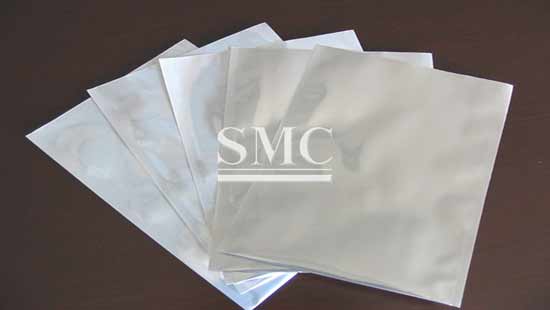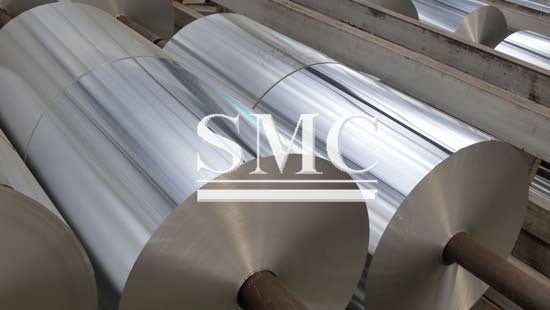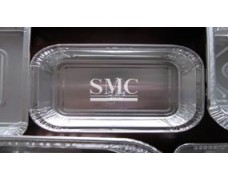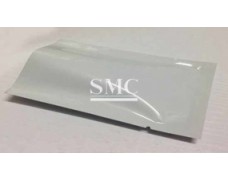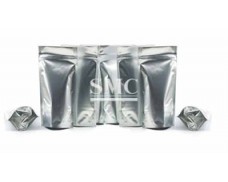
- Unternehmensübersicht Das Herz von Shanghai Metal Vision und Philosophie Partnerschaft Zertifizierungen Unternehmenskultur
- Unser Service Projekt-Design Wartung und Service Herstellung Transformation und Aufrüstung Lagerung und Logistik Verarbeitung und Handel
- Management Unsere Geschichte Globale Verantwortung
- Beschaffungszentrum Praktikum
- Metall Aluminiumprodukte Kupferprodukte Metallisch beschichtete Produkte Edelstahlprodukte Stahlprodukte Sonderlegierung
- Konstruktion Stahlgitter Lagerregal Stahlstruktur Stahlbrücke Gerüstbau Baumaterial Chemische Rohstoffe One Stop Solutions for Projects
- Containers ISO Standard Container Gerätecontainer Lagerbehälter Container Haus Reefer / Isolierbehälter Offshore Container
- Maschinen Formmaschine Andere Maschinen Schneidemaschine Verarbeitungsmaschine Biegemaschine Ziegelmaschine Motor
- Mechanische Produkte Fahrzeugindustrie Verschiedenes Festmacher Schiffsausrüstung Druckbehälter
- Elektrisches System Elektrisches Kabel Automatisierung Machtverteilung Solarenergie System Elektrisches Schutzsystem Transformator Fließband Blitzsystem
- Medizinisches Zubehör Fütterungsprodukte Atemwegsprodukte Pflegeprodukte Injektionsprodukte
- Baumaschinen
- EPC-Projekt
- Erdölleitung
- Wasserleitung
- Gas Leitung
- Boots- und Liegezubehör
- Metall zur Dekoration
- Transformator-Komponenten
- Wärmetauscherrohr
- Klimaanlage Ersatzteile und Zubehör
- Kessel
- Küchen- und Badezimmergerät
- Metall für Haushaltsgeräte
- Solarstromgerät
- Aufzug
- Dach und Decke
- Kabel
- Tank
- Verpackung
- Maschinen und Anlagen Ersatzteile und Zubehör
- Formenwerkzeug
- Autoteile
- Gleis- und Kranbahn
- Hardware-Anpassung
- Schleifmittel
- Straßenbaumaschinen
- Elektronische Bauteile
- Bau- und Ausbaumaterialien
- Türen und Fenster
- Kühlschränke
- Pressemitteilung Nachrichten aus der Metallindustrie Nachrichten von Maschinen und Anlagen Nachrichten von Bau und Gebäude Nachrichten von mechanischen Produkten Nachrichten von Containern Nachrichten von Elektrik System Nachrichten von medizinischem Zubehör
- Medienbibliothek Videos Bilder Folgen Sie den sozialen Medien in Shanghai
Aluminiumfolie
Grad: 1235, 8011, 8079, 3003, 1060
Temperament: O, H14, H18, H22, H24, H26
Dicke: 0.005mm - 0.2mm, nach Kundenwunsch
Grade: 1235, 8011, 8079, 3003, 1060
Temper: O, H14, H18, H22, H24, H26
Thickness: 0.005mm - 0.2mm, per customer’s request
Die Shanghai Metal Corporation ist führend in der Herstellung von Aluminiumfolien. Unser Aluminiumfolienwerk verfügt über 18 Folienmühlen, die mit einem Planheitskontrollsystem von Siemens und einem
Lehrenkontrollsystem von Honeywell ausgestattet sind. Wir haben 19 Stranggießanlagen, 6 Kaltwalzwerke, 18 Aluminiumfolienmühlen, 40 Schneid- / Trenn- / Trennlinien, 3 Streckrichtmaschinen, 15 Beschichtungslinien,
10 Eloxierlinien, 3 Ölbeschichtungslinien, mehr als 70 Glühöfen und andere Anlagen. Die Hauptproduktions- und Testausrüstung wird in Japan, in Deutschland, in Amerika und in Italien hergestellt.
Die Shanghai Metal Corporation wendet die fortschrittlichste Technologie in unserem Herstellungsprozess an und implementiert das beste Qualitätskontrollsystem, um die Kundenzufriedenheit unserer Produkte mit
einer Gesamtkapazität von bis zu 500.000 MT zu gewährleisten.
Shanghai Metal Corporation is a leader in aluminium foil manufacturing. Our aluminum foil plant has 18 foil mills equipped with flatness control system from Siemens and gauge control system from Honeywell. We have 19 continuous casting lines, 6 cold mills ,18 aluminum foil mills, 40 cutting/slitting/separating lines, 3 tension levelers, 15 coating lines, 10 anodizing lines, 3 oil coating lines, more than 70 annealing furnaces and other equipments. The main production and testing equipment is made in Japan, Germany, America and Italy. Shanghai Metal Corporation applies the most advanced technology in our manufacturing process and implement the best quality control system to assure customer satisfaction on our products, the total capacity up to 500,000 MT.
Spezifikationen von Aluminiumfolie:
1) Grad: 1050, 1060, 1070, 1100, 1200, 1235, 3003, 3102, 8011, 8079 usw.
2) Temperierung: O, H14, H18, H22, H24, H26
3) Dicke: 0,005 mm - 0,2 mm, pro Kundenwunsch
4) Breite: 15 mm - 1850 mm
Specifications of Aluminum Foil:
1) Grade: 1050, 1060, 1070, 1100, 1200, 1235, 3003, 3102, 8011, 8079, etc.
2) Temper: O, H14, H18, H22, H24, H26
3) Thickness: 0.005mm - 0.2mm, per customer’s request
4) Width: 15mm - 1850mm

Verpackung von Aluminiumfolie
Shanghai Metal Products wird entsprechend den Vorschriften und Kundenwünschen verpackt und etikettiert. Es wird sorgfältig darauf geachtet, Schäden zu vermeiden, die während der Lagerung oder des Transports auftreten können. Zusätzlich sind klare Etiketten auf der Außenseite der Verpackungen markiert, um die I.D. und die Qualitätsinformationen des Produkts leicht zu identifizieren.
1) Shanghai Metallstandard
2) Anpassung
Packaging of Aluminium Foil
Shanghai Metal Products are packed and labeled according to the regulations and customer's requests. Great care is taken to avoid any damage which might be caused during storage or transportation. In addition, clear labels are tagged on the outside of the packages for easy identification of the product I. D. and quality information.
1) Shanghai Metal Standard
2) Customization
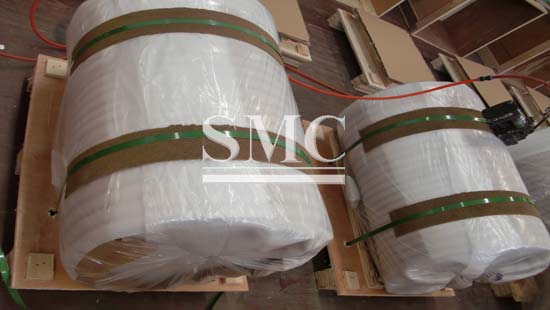
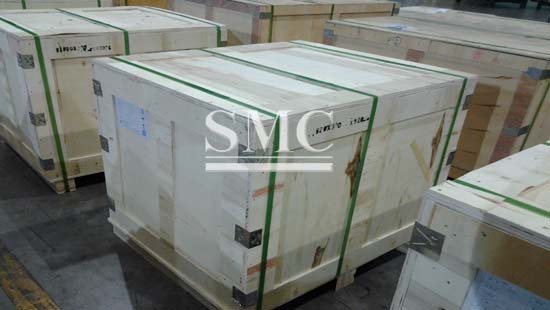
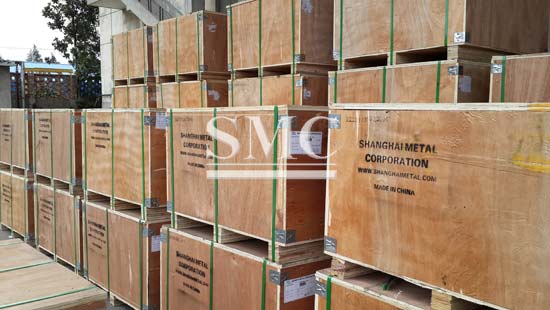
Anwendungen von Aluminiumfolie:
1) Aluminiumfolie für weiche Verpackung
2) Klimaanlagen Aluminiumfolie
3) Haushaltsaluminiumfolie
4) Aluminiumfolienbehälter
5) Klebeband aus Aluminiumfolie
6) Aluminiumfolienrolle (Aluminiumfolienverpackung)
7) Aluminiumfolienpapier
8) Biermarkenfolie
9) Kabelschirmung aus Aluminiumfolie
10) Aluminiumfolie für Flaschenverschlüsse
11) Aluminiumfolienbeutel
12) Zigarettenverpackung
13) Pharmazeutische Aluminiumfolie
14) Vakuumverpackter Beutel
15) Teelicht Tasse
F: Bietet Aluminiumfolie Isolierung?
A: Aluminiumfolie ist weit verbreitet für Wärmedämmung (Barriere und Reflektivität), Kabelauskleidungen (Barriere und elektrische Leitfähigkeit) und Wärmetauscher (Wärmeleitung). Die halbleitenden Eigenschaften der Aluminiumfolie machen sie zu einem Standardakzent im Rauchen von Tabakpfeifen: Ein Blatt aus perforierter Aluminiumfolie wird oft zwischen der Kohle und auch dem Tabak angeordnet, wodurch der Tabak erhitzt werden kann, ohne in direkten Kontakt mit der brennenden Kohle zu kommen .
F: Warum ist Aluminiumfolie auf einer Seite glänzend?
A: Der Grund, warum Aluminiumfolie auf einer Seite glänzend und auf der anderen Seite langweilig ist, ist sehr faszinierend. Aluminiumfolie wird durch Walzen zwischen aufeinanderfolgenden Stahlwalzen erzeugt. jeder Walzensatz drückt die Folie dünner. Die letzte Stufe des Walzens reduziert die Dicke der Folie auf ein Tausendstel eines Zolls oder vielleicht Verdünnungsmittels. Das Material ist so dünn, dass die Aluminiumfolie während der letzten Walzphase einfach zu zerreißen ist.
Für die letzte Phase des Walzens werden zwei Folienblätter einander gegenübergestellt und durch den letzten Rollensatz geführt. Da die Stahlwalzen extrem poliert sind, sind die Folienflächen, die mit den Walzen in Kontakt stehen, auch zu einer extrem glänzenden Oberfläche gebrostet. Nach dem Rollen werden die nachfolgenden Blätter voneinander getrennt. Die Oberflächen jeder Folie, die einander zugewandt war, haben eine matte Textur, da sie sich nur gegeneinander gequetscht haben und nicht die polierten Walzen.
F: Ist Aluminiumfolie die gleiche wie Alufolie?
A: Im heutigen Sprachgebrauch wird der Begriff "Alufolie" von vielen Menschen als "Aluminiumfolie" bezeichnet, die nach dem Zweiten Weltkrieg allgemein gebräuchlich war. Aluminiumfolie ist weniger kostspielig und hält besser im Gebrauch. Im späten 19. Jahrhundert und frühen 20. Jahrhundert war Alufolie gebräuchlich, und einige Leute beziehen sich immer noch auf das neue Produkt mit dem Namen des alten. Es gibt Unterschiede zwischen Aluminium und Zinn, wobei Zinn etwas steifer ist.
F: Was ist der Unterschied zwischen normaler Aluminiumfolie und starker Aluminiumfolie?
A: Aluminiumfolie kann ein sehr nützlicher Gegenstand sein, um die Küche zu besitzen. Aluminiumfolie wird oft zum Abdecken von Geschirr verwendet und kann sogar als Kochgefäß in einem Küchengerät oder einem Grill verwendet werden.
Die reguläre Aluminiumfolie (Houshold Aluminium Foil) wird am besten für Aufgaben wie das Abdecken von Speisen, das Verpacken von Sandwiches oder Gemüse und das Aufwärmen bereits gut durchgeführter Dinge im Küchengerät verwendet. Normale Aluminiumfolie ist dünner als Hochleistungs-Aluminiumfolie und hält hohen Durchwär- mungen und schweren Gewichten sowie starker Aluminiumfolie nicht stand.
Die hochbelastbare Aluminiumfolie (Aluminiumfolienpapier) ist zum Verpacken von Fleisch bestimmt, das zum Aufbewahren, zum Auskleiden von Pfannen während des Kochens und sogar zum Einwickeln von Speisen während des Garens in den Gefrierschrank gelegt wird. Darüber hinaus soll Schwerfolie für die langfristige Lagerung von Gegenständen beim Tiefkühlen oder zum Auskleiden und Kochen auf Grillrosten verwendet werden.
F: Wie recycelt man Aluminiumfolie?
A: Es braucht unglaublich viel Energie, um eine Rolle Aluminiumfolie zu erstellen. Recycling ist ein proaktiver Weg, um die Umweltbelastung zu reduzieren. Im Gegensatz zu Kunststoffen kann Aluminium ohne Qualitätseinbußen immer wieder recycelt werden. Es ist das perfekte recycelbare Material. Es gibt ein paar Schritte, die dazu beitragen können, Aluminiumfolie zu reduzieren, wiederzuverwenden und zu recyceln.
F: Was ist Anwendungen von Aluminiumfolie?
A: Viele der wichtigsten Aluminiumfolienanwendungen und Märkte haben eine Vielzahl von Spezialanwendungen. Sie werden in Bezug auf Diskussionen über verschiedene Eigenschaften oder wechselnde Operationen in verschiedenen Abschnitten dieses Buches erwähnt. Die Flexibilität von Alufolie und die vielen Arten, in denen es im Handel auf der ganzen Welt verwendet wird, erfordern jedoch eine zusätzliche umfassende Auflistung der Endverwendungen.
1) Aluminiumbehälter und flexible Verpackung
2) Halbfeste Folienbehälter
3) Aluminiumfolie Food Service Produkte
4) Haushalt & Institutionelle Folie
5) Aluminiumfolie Bauprodukte
6) Aluminiumfolie Finstock
7) Wärmetauscher für Klimaanlage
8) Aluminiumfolienkondensatoren
9) Aluminiumwabe
10) Aluminiumfolie Streifenleiter
11) Aluminiumfolie Lithographische Platten
12) Aluminiumfolie Caul Stock für Hochdruck-Laminate
13) Aluminiumfolie Karton Aktien
14) Aluminiumfolie Label Stock
15) Aluminiumfolie Kunst und Kunsthandwerk mit verschiedenen Farben
16) Andere Folienanwendungen
Applications of Aluminum Foil:
1) Aluminum foil for soft package
2) Air conditioners aluminum foil
3) Household aluminum foil
4) Aluminum foil container
5) Aluminum foil adhesive tape
6) Aluminum foil roll (Aluminum foil wrap)
7) Aluminum foil paper
8) Beer mark foil
9) Cable shielding aluminum foil
10) Aluminum foil for bottle caps
11) Aluminum foil bag
12) Cigarette packaging
13) Pharmaceutical aluminum foil
14) Vacuum-packed bag
15) Tea Light Cup
Q: Does aluminum foil provide insulation ?
A: Aluminum foil is widely used for thermal insulation (barrier and reflectivity), cable liners, (barrier and electrical conductivity) and heat exchangers (heat conduction). Aluminum foil's semi-conductive qualities build it a standard accent in tobacco pipe smoking: a sheet of perforated aluminum foil is often placed between the coal and also the tobacco, permitting the tobacco to be heated while not coming back into direct contact with the burning coal.
Q: Why is aluminum foil shiny on one side?
A: The reason aluminum foil is shiny on one facet and boring on the opposite is very fascinating. Aluminum foil is created by rolling it between sequential steel rollers. every set of rollers squeezes the foil thinner. The last stage of rolling reduces the foil's thickness to a thousandth of an inch or maybe dilutant. The matter is so thin that the aluminum foil is simply too simple to tear throughout the last rolling stage.
So, for the last stage of rolling, two sheets of foil are placed face to face and passed through the ultimate set of rollers. Since the steel rollers are extremely polished, the foil faces that contact the rollers also are brocaded to a extremely shiny surface. Once rolling, the ensuing sheets are separated from one another. The surfaces of every foil that had faced one another are matte in texture, since they had solely been squeezes against one another, and not the polished rollers.
Q: Is aluminum foil the same as tin foil?
A: In popular parlance today, many people use the term "tin foil" when what they actually mean aluminum foil, which came into common use following World War II. Aluminum foil is less costly and holds up better in use. In the late 19th century and early 20th century, tin foil was in common use, and some people continue to refer to the new product by the name of the old one. There are differences between aluminum and tin, with tin being a bit stiffer.
Q: What's the difference between regular aluminum foil and heavy-duty aluminum foil?
A: Aluminum foil may be a very helpful item to possess round the kitchen. Aluminum foil is often used to cover dishes and may even be used as a cooking vessel within a kitchen appliance or a barbeque grill.
The regular aluminum foil (Houshold Aluminum Foil) is best used for tasks like covering food dishes, wrapping sandwiches or vegetables and reheating already well-done things within the kitchen appliance. Regular aluminium foil is thinner than heavy-duty aluminium foil and and will not withstand high heats and heavy weights as well as heavy-duty aluminum foil.
The heavy- duty aluminum foil(Aluminum Foil Paper) is meant to be used for wrapping meats which will be placed within the freezer for storage, lining pans during cooking and even for wrapping foods in while you are cooking them. Additionally, heavy foil is meant to be used for long term storage of things during a deepfreeze or for lining and cooking on barbecue grills.
Q: How to Recycle aluminum Foil?
A: It takes an incredible amount of energy to create a roll of aluminum foil. Recycling is a proactive way to reduce the toll on the environment. Unlike plastics, aluminum is able to be recycled over and over again without compromising quality. It's the perfect recyclable material. There are a few steps to follow that can help reduce, reuse and recycle aluminum foil.
Q: What's applications of Aluminum Foil?
A: Many of the principal aluminium foil uses and markets have a variety of specialty applications. They are mentioned in reference to discussions of varied properties or changing operations in different sections of this book. However, the flexibility of aluminium foil and the many ways in which it's used in commerce throughout the planet, demand additional comprehensive listing of finish uses.
1) Aluminum Containers and Flexible Packaging
2) Semi-Rigid Foil Containers
3) Aluminum Foil Food Service Products
4) Household & Institutional Foil
5) Aluminum Foil Building Products
6) Aluminum Foil Finstock
7) Heat Exchanger for air conditioner
8) Aluminum Foil Capacitors
9) Aluminum Honeycomb
10) Aluminum Foil Strip Conductor
11) Aluminum Foil Lithographic Plates
12) Aluminum Foil Caul Stock for High-Pressure Laminates
13) Aluminum Foil Paper Board Stocks
14) Aluminum Foil Label Stock
15) Aluminum foil arts and crafts with different colors
16) Other Foil Applications
HIER
FÜR
PREIS
We will contact with you within 8 hours
